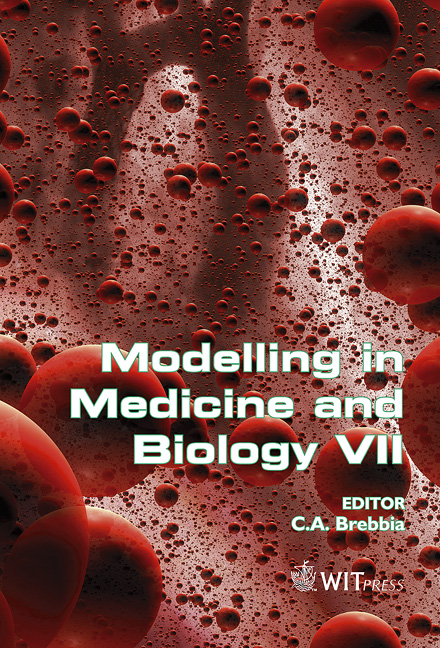Coupled Rotations In The Lumbar Spine – Are These A Consequence Of Passive Spinal Anatomy?
Price
Free (open access)
Transaction
Volume
12
Pages
10
Published
2007
Size
515 kb
Paper DOI
10.2495/BIO070091
Copyright
WIT Press
Author(s)
J. P. Little, M. J. Pearcy & C. J. Adam
Abstract
Previous studies have found that primary rotations in the lumbar spine are accompanied by coupled out-of-plane rotations, and abnormal coupled rotations have been associated with spinal pathology. However, it is not clear whether this accompanying rotation is due to passive (discs, ligaments and facet joints) or active (muscles) spinal anatomy. The aim of this study was to use a finite element model of the lumbar spine to determine three-dimensional rotations in the loaded spine, due to passive spinal anatomy alone. Computed tomography data for the bony anatomy of the visible man lumbar spine was used to generate a 3D osseoligamentous finite element model. Attachment origins and ligament stiffnesses for the major spinal ligaments were based on data reported in the literature. Loading conditions simulated physiologically observed rotations in the six degrees of rotational freedom, applied about in vivo centres of rotation. Model predictions were validated by comparison of intra-discal pressure and primary rotations with in vivo data and these showed good agreement. The computed coupled rotations for flexion, extension and axial rotation were similar to the in vivo results, with rotations within the first standard deviation of the reported in vivo data and in the same direction. Analysis of lateral bending consistently demonstrated higher coupled axial rotations than were observed in vivo, however, these were in the same direction as observed in vivo. The observed similarity in computed and in vivo nucleus pressures and primary rotations at each spinal level validated the models’ ability to predict the in vivo response of the osseoligamentous lumbar spine. Coupled rotations due to primary motions in the sagittal and transverse planes appear to be caused by the passive spinal anatomy. However, for lateral bending, data for the computed coupled rotations suggest that the osseoligamentous anatomy alone does not account for the observed coupled rotation in vivo, and the muscles play a key role in the coupled response of the spine under this motion. Keywords: finite element, spine, coupled motions, spinal loading.
Keywords
finite element, spine, coupled motions, spinal loading.





